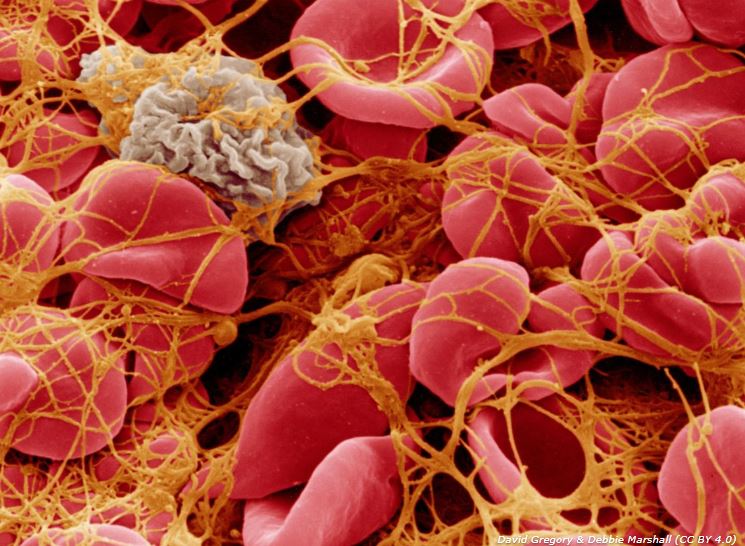Researchers at the University of Oxford have discovered the specific gene mutations that are required for the development of leukaemia in children with Down’s syndrome.

Children with Down’s syndrome have a 150-fold increased risk of myeloid leukaemia, and while some of the genetic causes of this have been previously established, this is the first study to identify a wide range of mutations and how they functionally interact to lead to leukaemia.
The study, carried out with colleagues from Hannover Medical School and Martin Luther University Halle-Wittenberg, was published today in the journal Cancer Cell. It was funded by the NIHROxford Biomedical Research Centre (BRC).
“We already knew that 30 per cent of babies born with Down’s syndrome have acquired a change in a gene called GATA1 in their blood cells. This is not an inherited genetic change, but one that occurs and will remain only in the baby’s blood cells,” said the author of the study, Professor Paresh Vyas, of the MRC Weatherall Institute of Molecular Medicine at the University of Oxford’s Radcliffe Department of Medicine.
“The abnormality in the GATA1 gene can be detected by a simple blood test at birth. Babies with an altered GATA1 gene have a predisposition to develop leukaemia, and we often refer to this as myeloid preleukaemia.”
Last year, the British Society for Haematology introduced new national guidelines recommending that all babies born with Down’s syndrome should have a new genetic test to detect signs of the preleukaemic condition. The test was developed by Prof Vyas and Prof Irene Roberts, of the University of Oxford’s Department of Paediatrics.
Of the 30 per cent of children with Down’s syndrome who are found to have myeloid preleukaemia, only 10 per cent will go on to develop myeloid leukaemia – or three per cent of all children with Down’s syndrome. Until now, it was not understood why only some children with the GATA1 mutation were progressing to full leukaemia, while others were not.
“Ninety per cent of babies with Down’s syndrome do not go on to develop leukaemia. But until now, we did not fully understand why some babies did develop leukaemia,” said Prof Vyas, who is also the Oxford BRC Co-theme Lead for Haematology.

“To answer this question, we carefully characterised the mutations in genes required for leukaemia to develop. We found that additional genetic changes are required in the altered GATA1 blood cells, and these additional changes transform the preleukaemic blood cells into leukaemic blood cells.’ In total, 43 different altered genes were found.”
The discovery of which specific genetic changes are required for leukaemia to develop has practical implications. While children with Down’s syndrome are currently tested at birth for the GATA1 mutation, it may now become possible in the future to test for the additional mutations too.
“This would mean that we could identify the small percentage of children who will develop leukaemia more quickly and easily, and importantly reassure the vast majority of families whose children will not develop leukaemia,” Prof Vyas said.
“The identification of these genetic changes may also mean we can develop and test new treatments specifically targeting the genetic changes we now know are required by the leukaemia – and so develop more targeted treatments with less side effects.” Current treatments for Down’s syndrome children with leukaemia are already highly successful, and off the back of this research, another possible drug treatment has come to light. The drug Ruxolitinib, which is currently used to treat some blood conditions, could potentially be used to treat some of the specific genetic mutations found in the study.